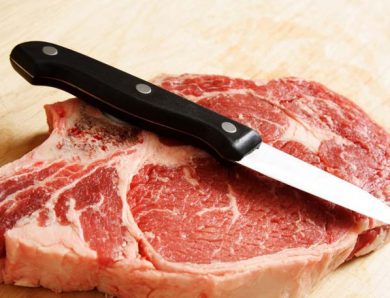
What Color of Dishes Should I Buy For Everyday Meals?

It’s that time. You’ve grown tired of looking at your old, cracked plates, and people are beginning to talk. It’s time for brand-new tableware. In addition to the shape of the meals, among the most asked questions is, “What color of meals should I purchase for everyday meals?” Should they match the tablecloth, or the design? You may even choose to go to the regional Wal-mart, K-mart, or other local shop and see what’s readily available.
As you search down the tableware aisle, you may be awestruck at the colors and styles offered. There are oval plates, round plates, and even fresh starts. And they are available in every color, and combination of colors in the rainbow.
So what’s the huge offer? As long as they look nice, does it truly matter? The response might shock you. Think it or not, the color of your meals, as well as the shape and the size have a huge impact on how you eat, as does the tablecloth, and decoration. Restaurateurs and chefs have known about this for a long time, but they would choose that the general public not know it. If you haven’t guessed, yet, I’m about to let a very large cat out of the bag.
Look at the two circles and decide which is larger:
plate-1
It was called after the Belgian scientist that discovered the phenomenon in 1865, Joseph Remi Leopold Delboeuf (they liked long names back then …) It was found that a circle with a concentric circle on the exterior would appear bigger than one without the outdoors circle. It wasn’t long prior to the restaurant organization took notification, and began having plates created with thin rims to make them appear bigger. Now you understand why standard contemporary plates are made the method they are.
The Delboeuf Illusion likewise works with color contrasts. A new research study done by Brian Wansink and Koert Van Ittersum has proved that food parts on a contrasting colored plate appear larger than on one with less contrast. (Ittersum and Wansink: Delboeuf’s Illusions Bias on Serving and Eating Behavior, Journal of Consumer Research, Vol 39, No. 2, August 2012). To highlight the concept, take a look at the two ‘plates’ in the drawing listed below:
plate-2
Although the green dot left wing appears bigger, both circles, and both green dots are precisely the very same size.
This has some intriguing possibilities, when you think of it. An individual may be able to consume less, and drop weight simply by altering the color of their plates. Prof. Wansink, who is the former Executive Director of the USDA’s Center for Nutritional Policy and Promotion, went a step even more with his experiment. They set up 2 buffets with pasta., and a choice of either marinara (red), or Alfredo sauce (sort of white … ish) One group was given contrasting plates, while the other was offered plates that carefully matched the color of the food. Individuals serving themselves with a low contrasting mix (ie: marinara on a red plate, or Alfredo on a white plate) served themselves a whopping 22% more food. Think of what that could add up to, over time… The study also found that decreasing the contrast of the tablecloths and tableware caused individuals to consume as much as 10% less food … good news for people who wish to trim down.
The research study found that even the size of the plates had a dramatic impact on just how much individuals ate. Smaller sized plates cause individuals to consume smaller portions, as much as 20% less, although the portions appear larger. The results of these tests should go a long method towards assisting you answer the question, “What color plates should I purchase for everyday meals?”
A lot might depend both on your desires, and what kinds of food you prepare most often. Do you wish to eat more green veggies (or get another person to)? Attempt serving them on a larger-sized green plate. To slim down, you could attempt going to smaller-sized plates, and utilize contrasting colors to the food you are serving. And don’t forget, this deals with beverages, too. The study found that individuals put 28% more liquid into a short large glass, than a high one. Of course, if you wish to gain weight, then simply do the opposite.
The apparent conclusion is to have several different-sized plates, in numerous colors. I ‘d recommend a choice in green, red, yellow, white, and possibly brown (for fried foods). Have an excellent assortment of 9 ″ and 12 ″ plates useful. And, if you purchase anything Low Fat, remove the labels. Knowing something is Low Fat triggered people to take in 16%-23% more calories. Great research study, huh????
By making cautious use of the details gotten through this study, you’ll never once again have to wonder, “What color plates should I purchase for everyday meals?





No Comment